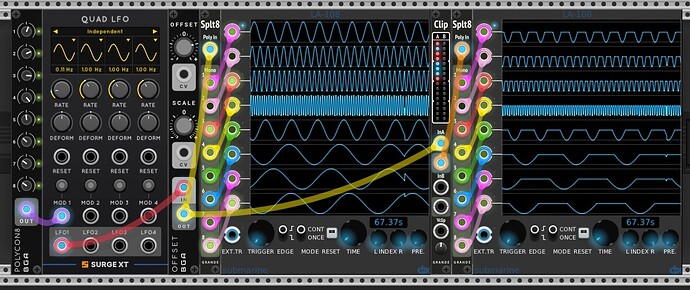Clip (Grande)
Polyphonic dual clipper with adjustable clipping threshold. Clip’s display shows active (below threshold) channels in blue and currently clipping (above threshold) channels in red.
Use as a clip/logic monitor by just attaching the inputs, not passing through the module.
UPC_Clip (Grande)_20241010.vcvs (12.7 KB)
